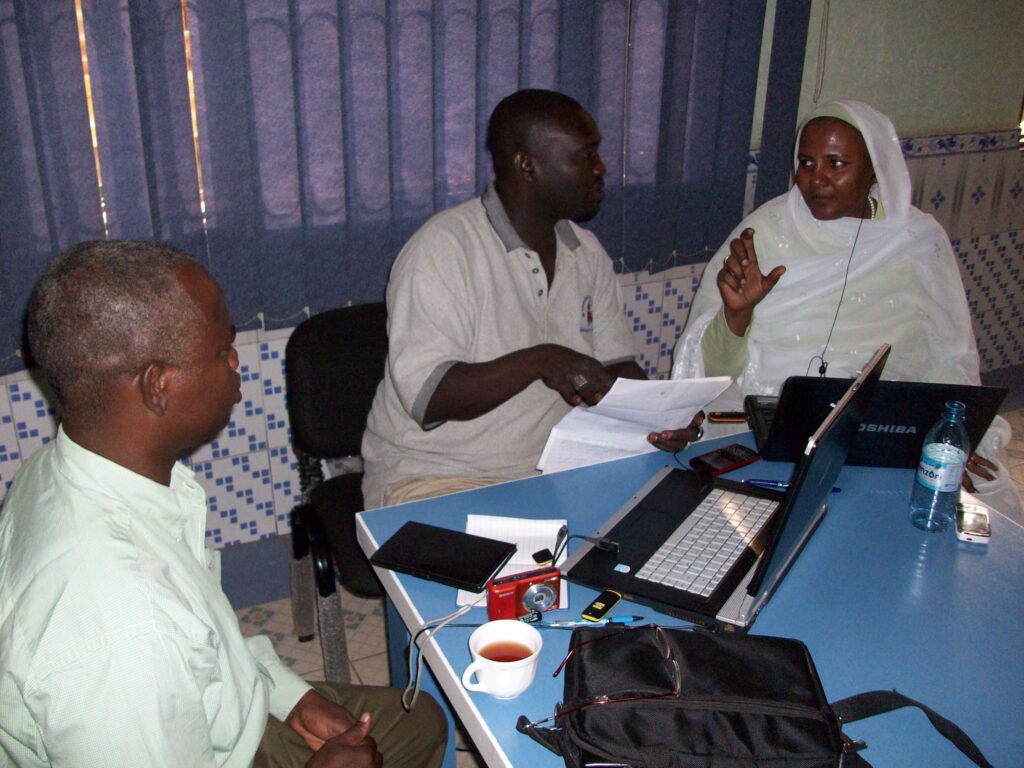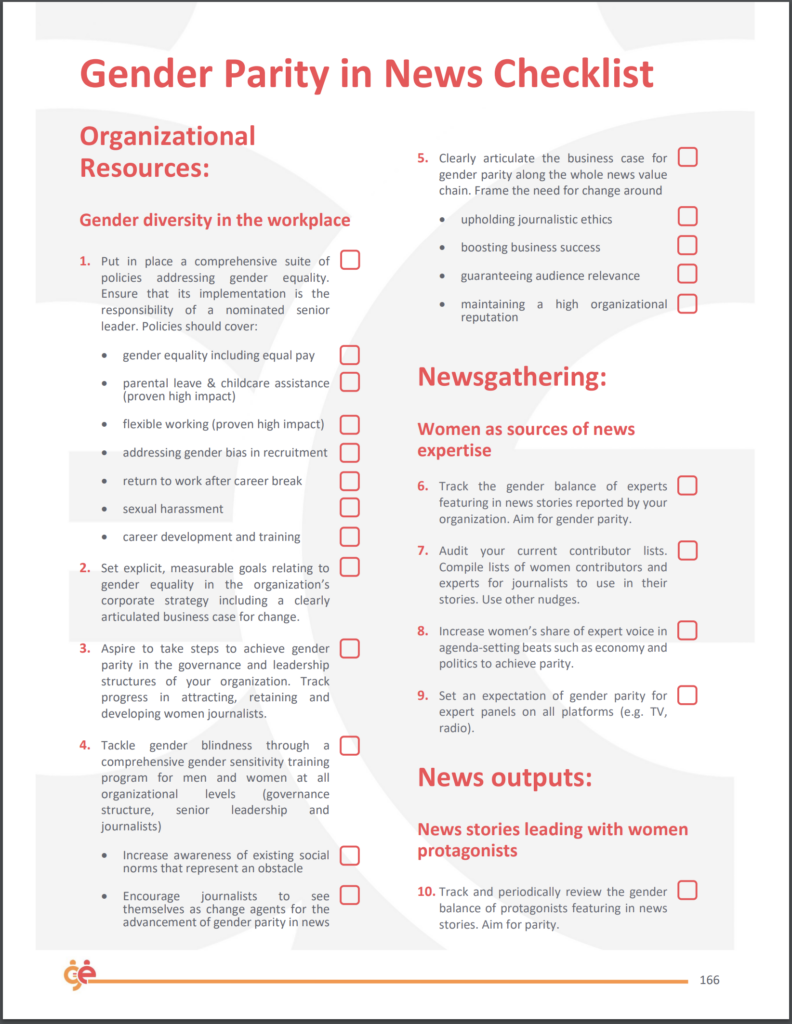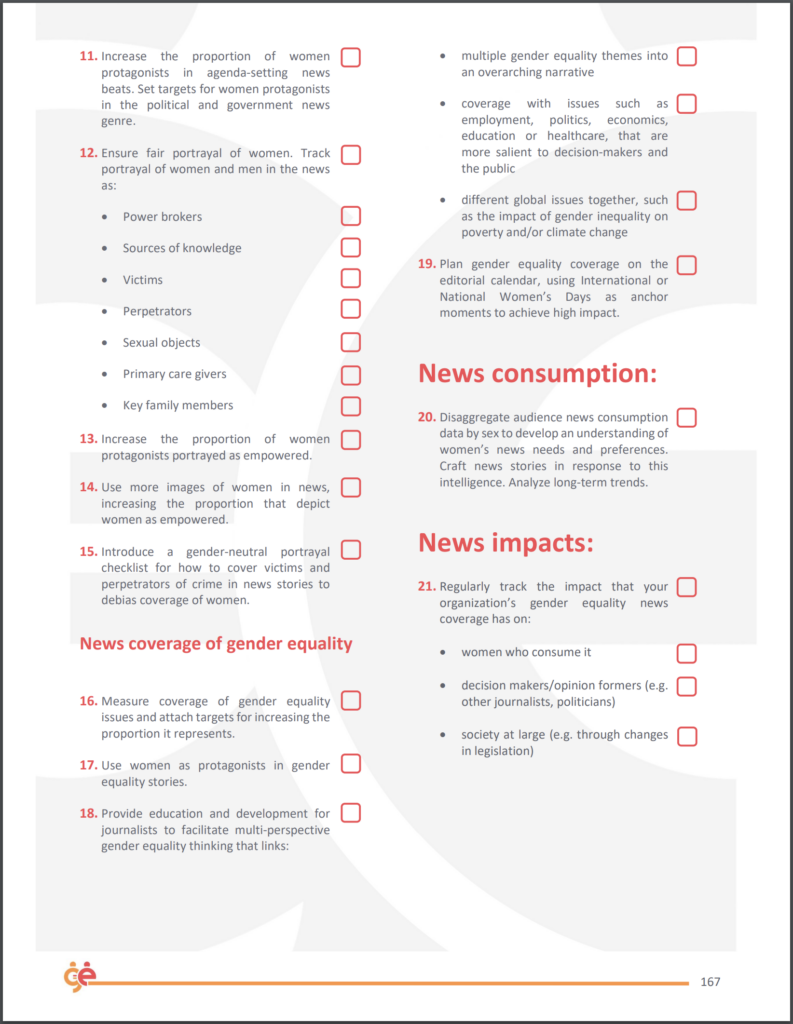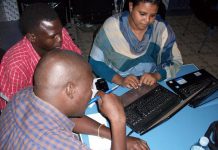
Is your news organisation and its output male dominated? Are women fairly represented in newsroom leadership roles and the stories covered? Do your staff and your news agenda reflect the society they serve?
A 12-point plan containing “substantive opportunities to reshape the status quo” and improve the representation and voices of women in the global news industry was published in November 2022.
We look at the steps suggested and examine the possible consequences.
The report Outrage to Opportunity looks at the representation of women in newsrooms in India, Kenya, Nigeria, South Africa, the UK, and the USA.
Luba Kassova, the report’s author, says in-depth interviews with more than 40 senior editors in the six countries revealed two areas of concern:
- The “underrepresentation” of women in news leadership roles.
- The “invisibility” of women in news coverage.
Kassova’s research revealed a “cultural exclusion” of women in news leadership roles and found that the voices of women “remain muted in a global news industry”.
However the study also recognises that progress is being made. It looks at 168 existing initiatives which aim to improve women’s representation or inclusion in news.
And it identifies practical steps that could be taken to “include the missing perspectives of women of all colours in news leadership and coverage”.
The report says that taking these steps could open up significant business opportunities and that “global revenues in the newspaper industry would increase by a cumulative $11bn by 2027 and $38 billion by 2032“.
This article looks at those 12 practical steps that could be taken by news organisations. They are listed below with the author’s permission.
The 282-page document – embedded at the foot of this article – sets out three areas which the author says “requires the news industry’s urgent attention”.
1: Inclusion
The report found that women are still on the margins of editorial decision-making in the highest-profile news areas. In the major journalistic specialisms such as business, politics, and foreign affairs, women hold as few as one in six editorial roles in the countries researched. Occasional instances of parity, for example South African political editors or US business editors, are counterbalanced by exclusively male leadership in political editor roles in countries such as Kenya and India.
2: Race
According to the report, women news leaders are subject to marginalisation in countries with multi-racial populations such as South Africa, the UK, and the US. This, the report says, is a news industry “blind spot”. In the countries examined their representation is significantly below their proportion in the working population. Kassova says that when interviewed, news leadership teams are either unaware, reactive, push back, or turn a blind eye to the problem.
3: Coverage
The report says the coverage of issues that affect women is disproportionate. Just 0.02% of news coverage globally focuses on the gaps between men and women in pay, power, safety, authority, confidence, health, and ageism. According to the report:
“Just having women in many leadership positions is not the only solution. You need women’s voices to be heard, and, when women are in leadership positions, for them to be in meaningful positions.”
Steps to be taken
The report outlines 12 solutions for:
“changing the status quo and improving women’s representation and inclusion in news leadership and creating a more balanced and inclusive news coverage that engages more female and racially-diverse audiences”.
News sector level
- Consolidate efforts at an industry level to enhance progress
- Set up a body that unifies all working in this area under the umbrella of the gender equity cause.
- Nonprofits and associations working to improve women’s position in news should collaborate more and compete less.
- Develop industry-wide initiatives that aim to understand women audiences.
News organisational level
- Conduct a comprehensive gender diversity audit across all elements of the news operation
- Carry out an audit of the existing gender balance and news initiatives for women along all the elements of the value chain.
- Make the gender diversity strategy explicit
- Agree the goal to pursue gender balance in your news organisation and coverage and make it explicit in the organisation’s strategy.
News leadership level
- Improve the representation of all women
- Raise awareness that male-favouring norms prevail in society and in journalism.
- Be intentional about change at all levels within your news organisation by setting targets and measuring representation continuously along the whole news value chain.
- Challenge the persistent soft vs. hard news gender stereotyping that keeps women out of editorial roles in high-profile areas such as politics, economics, and foreign affairs.
- Develop talent retention programmes, especially for mid-level managers.
- Improve specifically the representation of women of colour
- Measure women’s representation to understand the role of race and ethnicity when overlaid onto gender.
- Review recruitment and retention processes to accommodate diverse talent.
- Establish and measure targets for representation and inclusion of women of colour.
- Improve the inclusion of all women in decision-making
- Ensure everyone understands that a more diverse team does not automatically translate into inclusive decision making.
- Consciously tone down the competitive win-lose journalistic values inside the newsroom to create a more empathetic culture.
- Encourage support groups for women, with men on board.
- Use employee engagement surveys to measure employees’ and leaders’ perceived inclusion.
- Set up initiatives that specifically support individual women’s safety and well-being.
- Improve specifically the inclusion of women of colour in decision making
- Beware of knee-jerk reactions to external trigger events which lead to superficial solutions.
- Educate yourself about the stressful experiences of women of colour in your news organisation.
- When considering a Diversity, Equity and Inclusion (DEI) initiative, bring in experts to run it rather than allocating it to staff with lived experiences but no formalised expertise.
- Do not expect women or ethnic minority groups to lead and resolve their own underrepresentation or exclusion. Offer support.
- If you are a woman of colour, do not take on DEI initiatives if this is too emotionally draining.
- Measure and track the success of DEI initiatives. Establish baselines before the initiatives start.
Newsroom and journalism level
- Improve the representation and inclusion of women in newsrooms
- Implement recommendations for gender diversity in the workplace from the “Gender Parity in News Checklist” in ‘The Missing Perspectives of Women in News’ report (p. 166). The two-page checklist is embedded at the foot of this article.
Newsgathering and news coverage
- Improve the representation of all women
- Focus on circumventing the five main biases in journalism (status quo, male bias leading to gender blindness, short-term outlook, reductive journalism, organisations’ unwillingness to report on themselves).
- Measure the impact of your women-centric journalism.
- Make your newsroom more inclusive and accessible through outreach training.
- Ensure the sustainability of interventions to diversify contributors: keep them simple, get backing from both the top and the grassroots, and, ideally, make them voluntary.
- Improve storytelling about women of all colours
- Look for story angles that appeal to both women and men.
- Use more micro angles in storytelling, including human stories to make macro stories relevant.
- Increase news coverage of seven gender gaps (power, pay, safety, authority, confidence, health, and ageism), which are wider for people of colour.
- Introduce inclusive storytelling and encompass the perspectives of different communities and audience groups about how a particular story affects them.
- Improve the portrayal of all women
- Recognise that the portrayal of women of all colours in the news is an industry blind spot.
- Start measuring the use of common gender or racial stereotypes in your news coverage.
- Focus on expertise rather than identity when interviewing women contributors.
- Conduct portrayal analyses to understand how news contributors are portrayed.
News consumption and impact
- Reframe the case for change to include the business opportunity of serving women audiences
- Develop a business plan for increasing revenue from women audiences whilst still retaining men’s readership.
- Research and develop women-friendly news products and formats.
- Track women’s engagement and consumption.
- Track the impacts of any new strategy (on finance, brand, individuals, influencers, and decision-makers).
The business case
The report says gender equality in news makes business sense. It claims that if the “addressable gender consumption gap” in the global news industry is closed there could be a potential cumulative revenue opportunity of $43 billion between 2023 and 2027 and $83 billion between 2023 and 2032. See the section of the report covering business opportunities (part 4, chapter 2).
Outrage to Opportunities
The entire 282-page report Outrage to Opportunity is embedded below.
The report was produced by the international audience strategy consultancy AKAS, and published by Internews.
The gender parity in news checklist
This checklist appeared on pages 166 and 167 in the 2020 report by Luba Kassova “The Missing Perspectives of Women in News“. It is republished here with the author’s permission.










